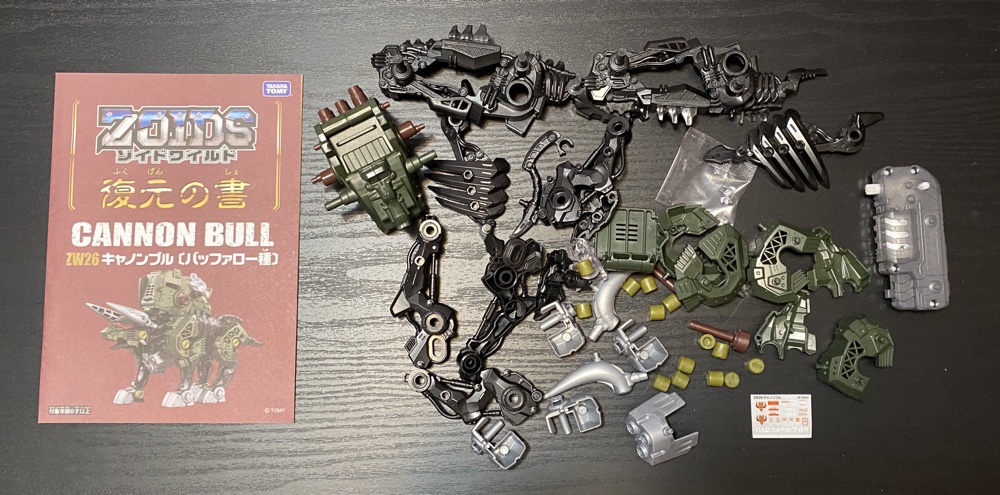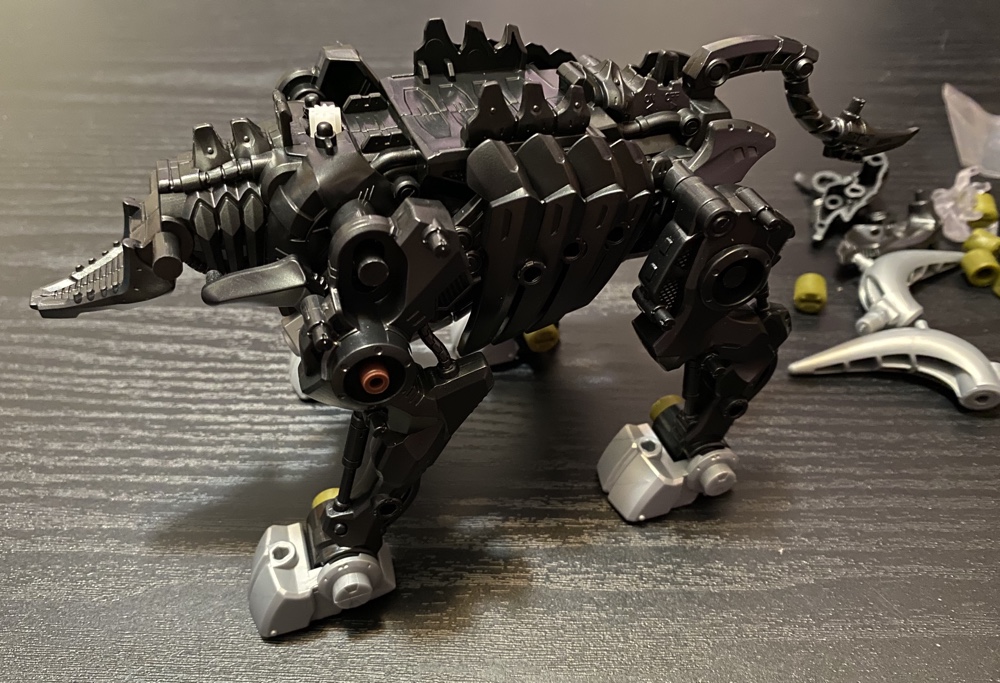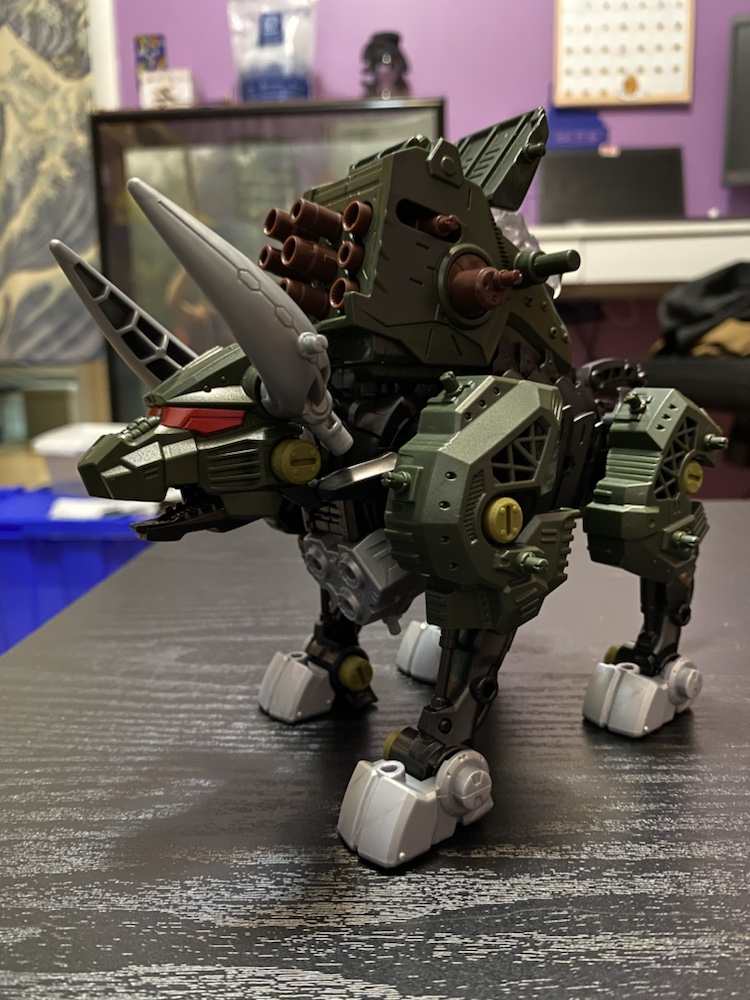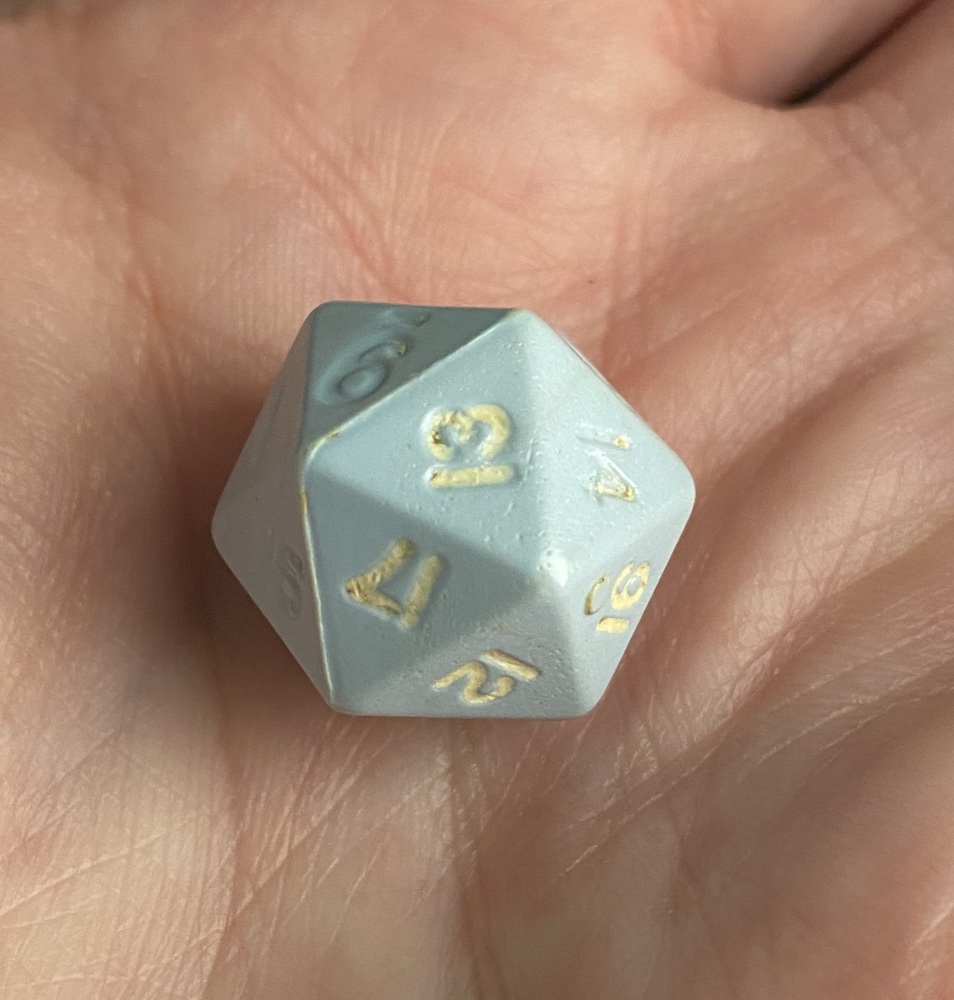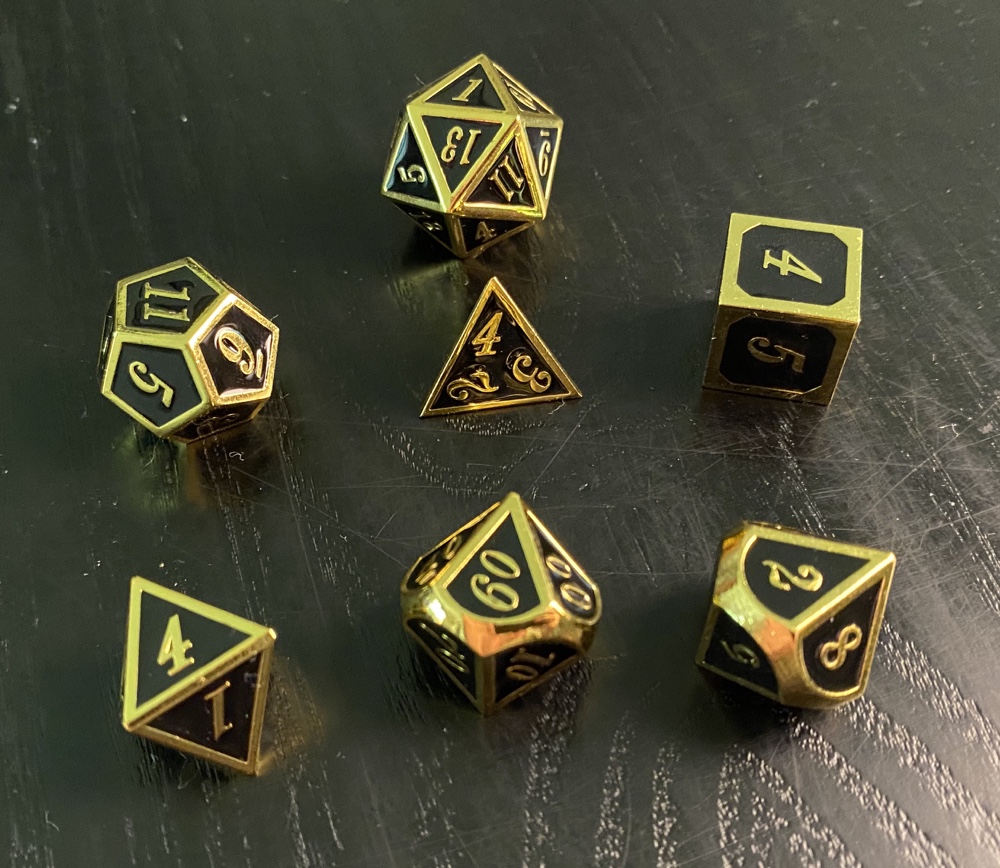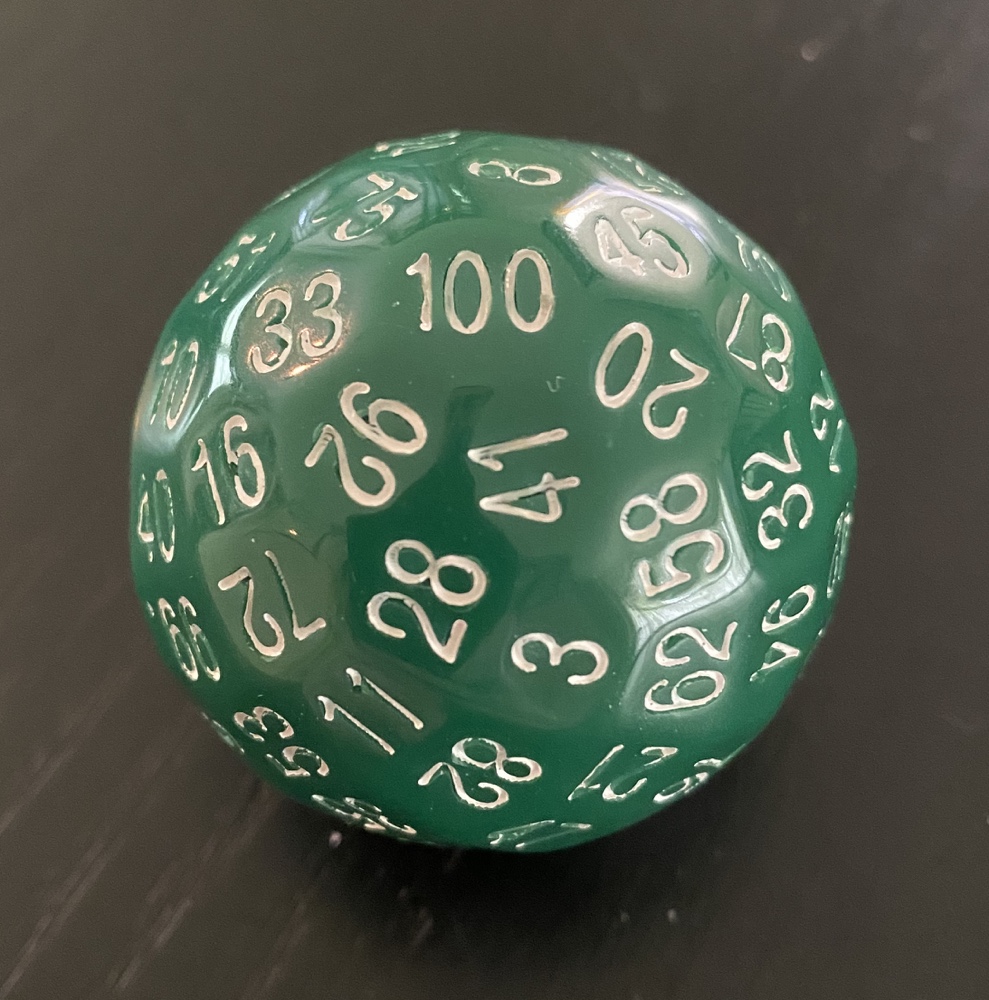Nintendo released the GameCube in late 2001, and I was out on the US release day (Nov 18) to buy mine. There was a lot of anticipation for the console after the somewhat clumsy Nintendo 64, and we were all eager to see what Nintendo could do with games in 480p (what was then) high definition.

The GameCube (GC) featured a fantastic controller (the basic design of which continues today in the Switch Pro controllers), four inbuilt ports for multiplay, progressive scan graphics, removable cards for save files and optical disc media. During its lifespan it would add the first wireless controllers, GBA connectivity and even a device that would allow it to play Gameboy and GBA games (this is the black object connected under my GameCube in the above photo).
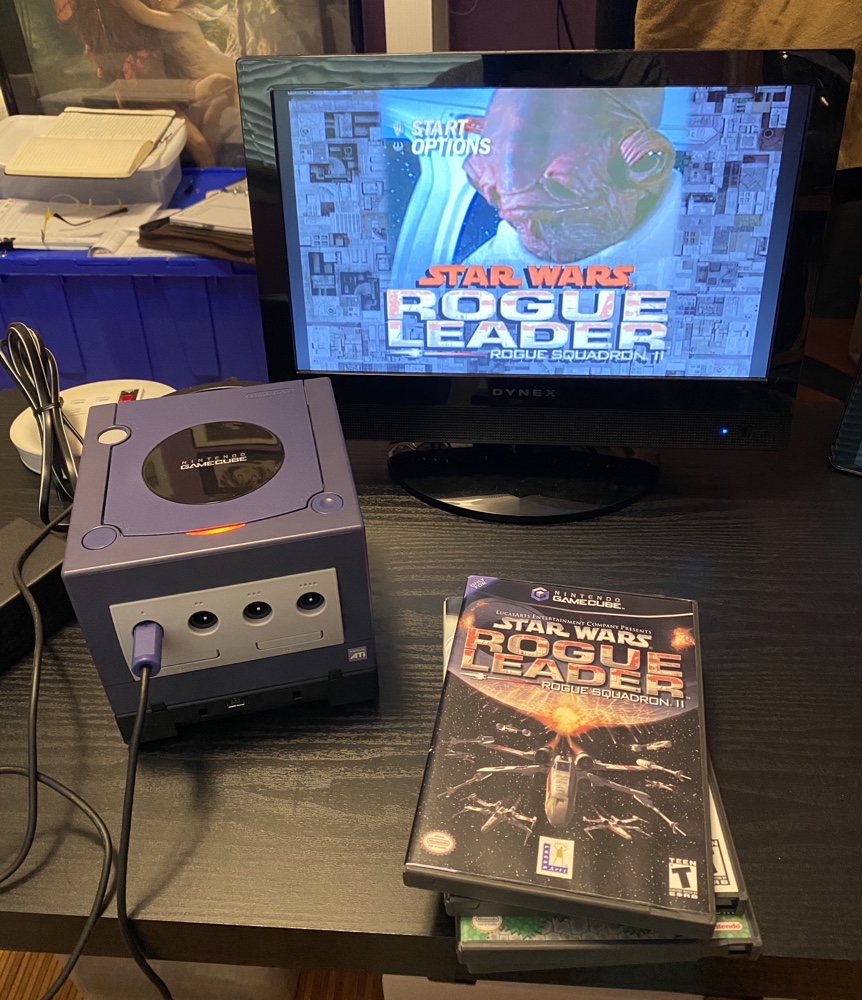
As with all consoles the hardware was nothing without the games, and while the Mario game (Super Mario Sunshine) has developed a bit of a bad reputation (I love it!), the system brought us the amazing trilogy of Star Wars games from Factor 5, an incredibly playable Mario Kart, the Viewtiful Joe series, two installments in the Phantasy Star Online series and two new Zelda games.
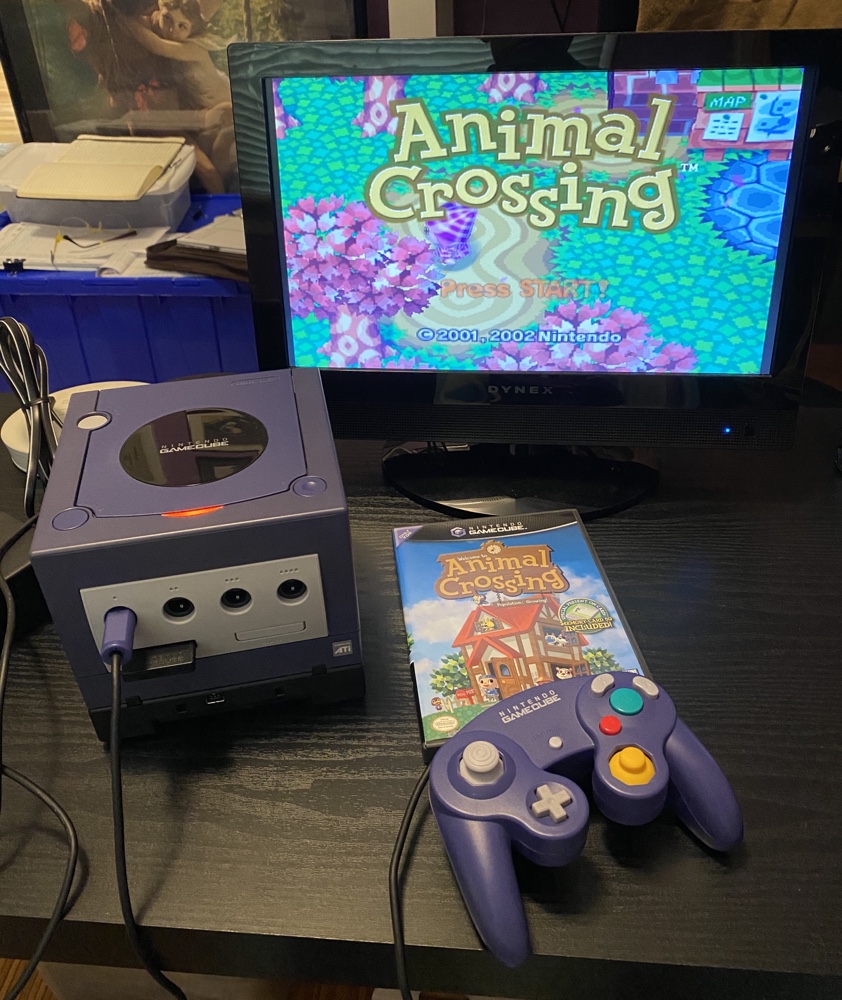
It was also the console on which the Pikmin, Metroid Prime and Animal Crossing series began (yes I’m ignoring Animal Forest here…). Animal Crossing in particular evolved from just being a game to became a way of life for a couple of years: I literally played it every day! I fired up my save file to check in on my town this past weekend and found my neighbors were a bit mad I hadn’t talked to them in quite a while:
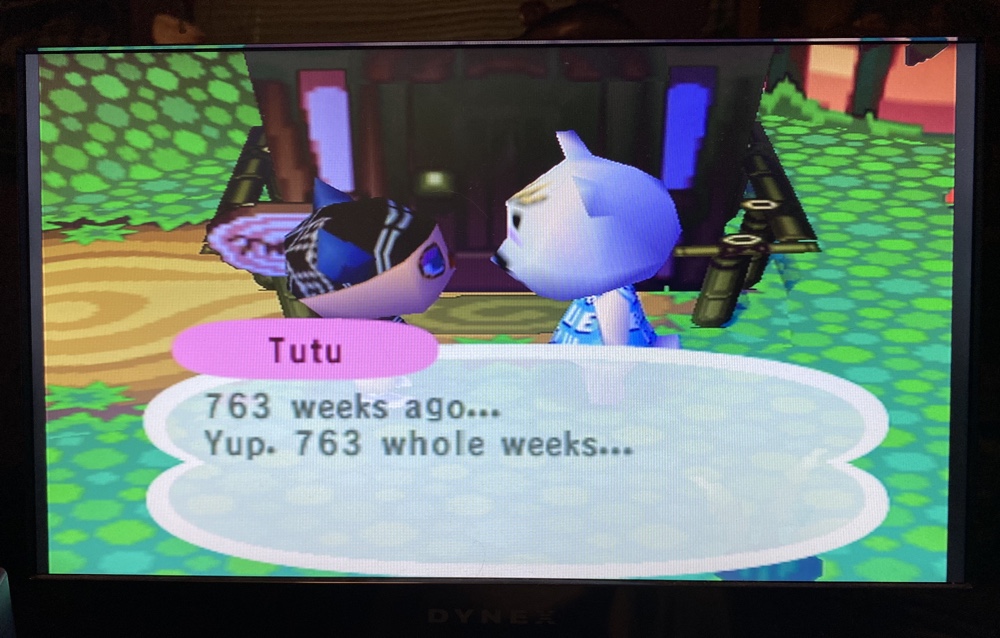
Those graphics are primitive, but that’s the game not the system (since AC was originally developed for N64). It hardly mattered; Animal Crossing was another example of Nintendo showing us that graphics were far less important than gameplay 🙂
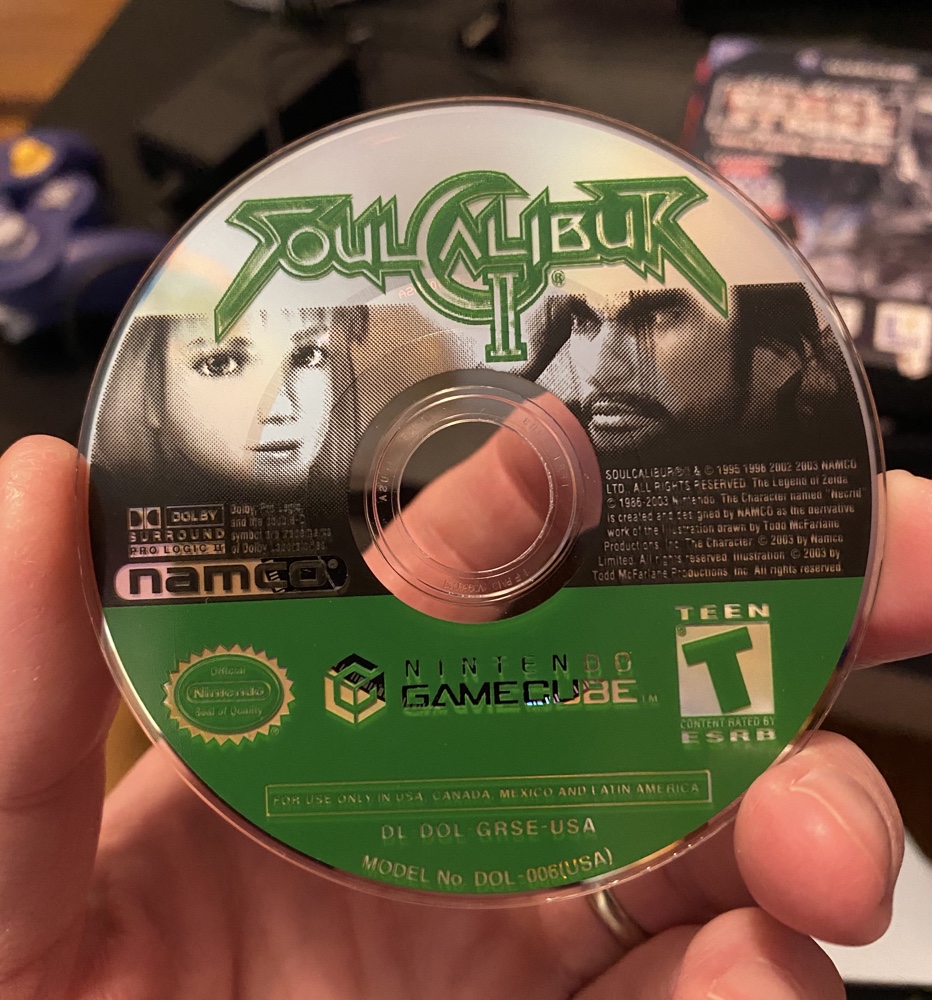
The GC used proprietary 1.5 GB mini DVD discs (for anti piracy reasons) which were initially sufficient but after a few years some games came on more than one disc. Nintendo was also generous with demo and promotional discs, and I’ve got several in my collection:
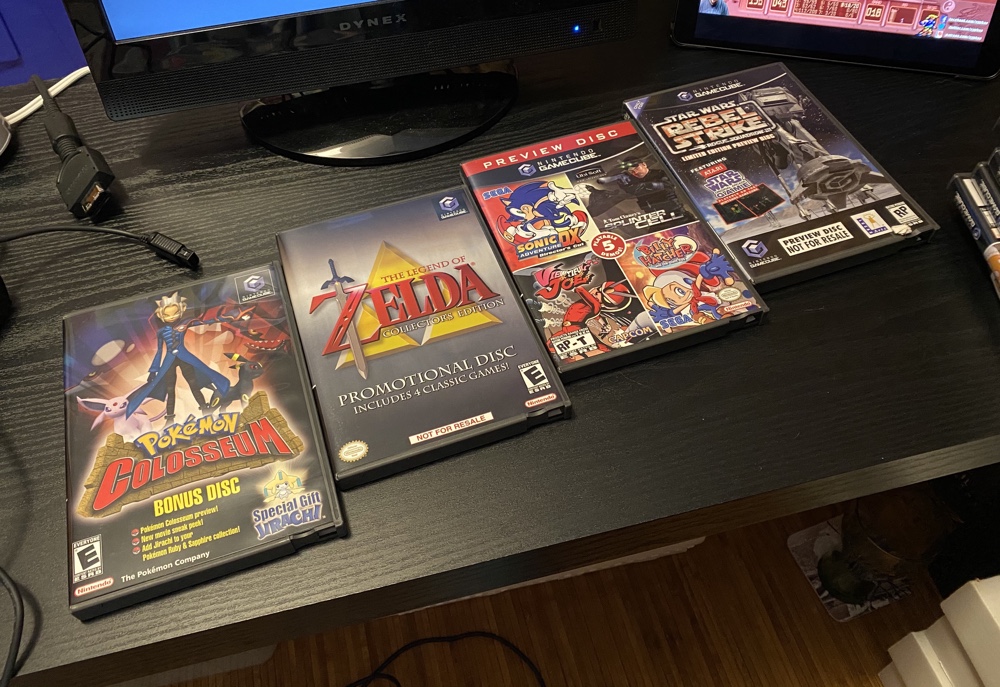
During the life of the console I bought just under 50 games, only 2 of which I ever traded in. By about 2005 new game releases had slowed, and by late 2006 the system was in its final days and many games were budget releases. I bought my last game in mid 2007, and Nintendo discontinued the system later that year.
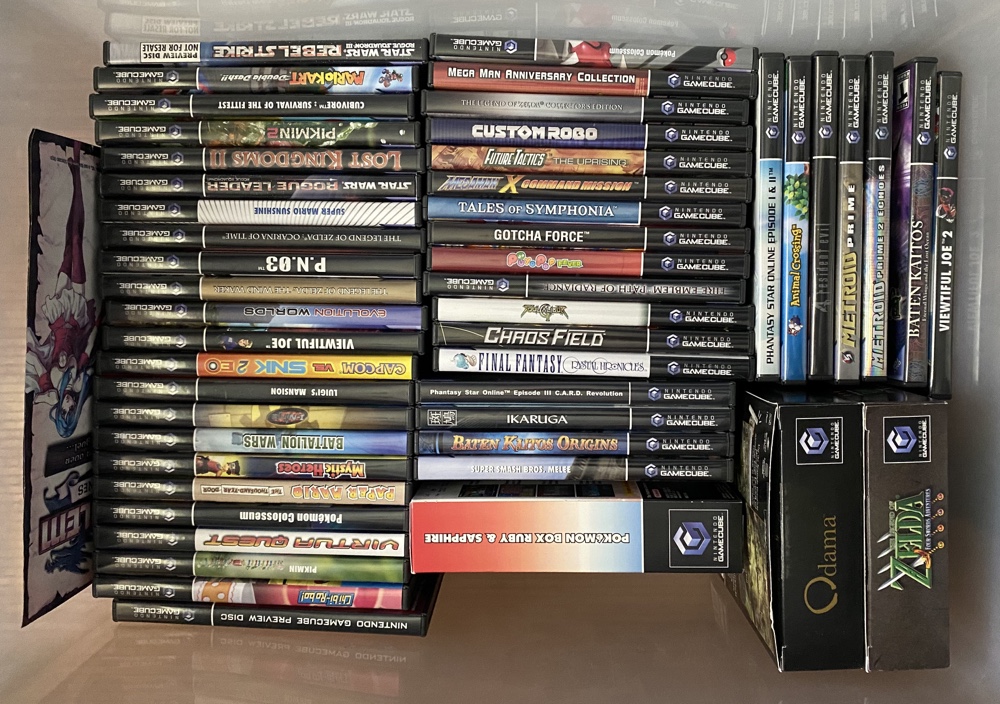
As with most of my collection my games are complete in box and in pristine condition. The GameCube is not yet as collectible as some of its predecessors, but some games sold poorly despite being excellent and have become quite valuable these days.
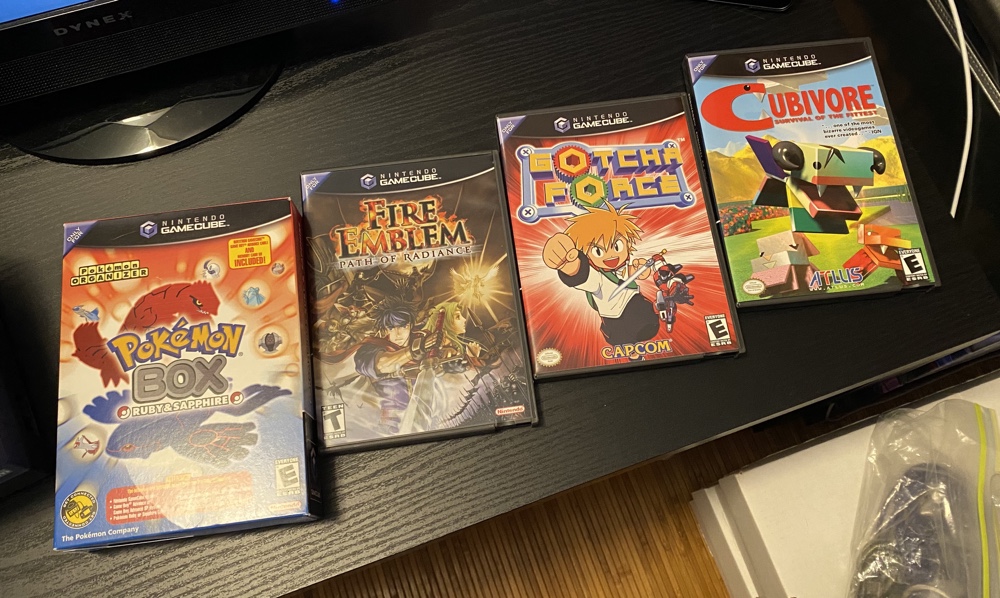
The game on the left is known as the ‘big box version’ of Pokémon Box and is the rarer of two versions of a game that was rare even upon release. I bought it direct from Nintendo in 2004 for only $20 but could probably sell it for fifty times that price today. The other three in the picture are collectively worth about $500. The Pokémon Collosseum game and bonus disc (see above photo) are also worth considerably more than I paid. In fact quite a lot of my games have appreciated in the years since I bought them.
It makes me wonder if I should sell my GameCube games next!
The GameCube was followed up by the Wii, which was successful beyond even the wildest dreams of Nintendo and has since overshadowed the GC for most. I still remember the GameCube as the superior console, and taking it out and giving the games a spin for the first time in a decade made me remember just how much fun the little boxy console is 🙂

